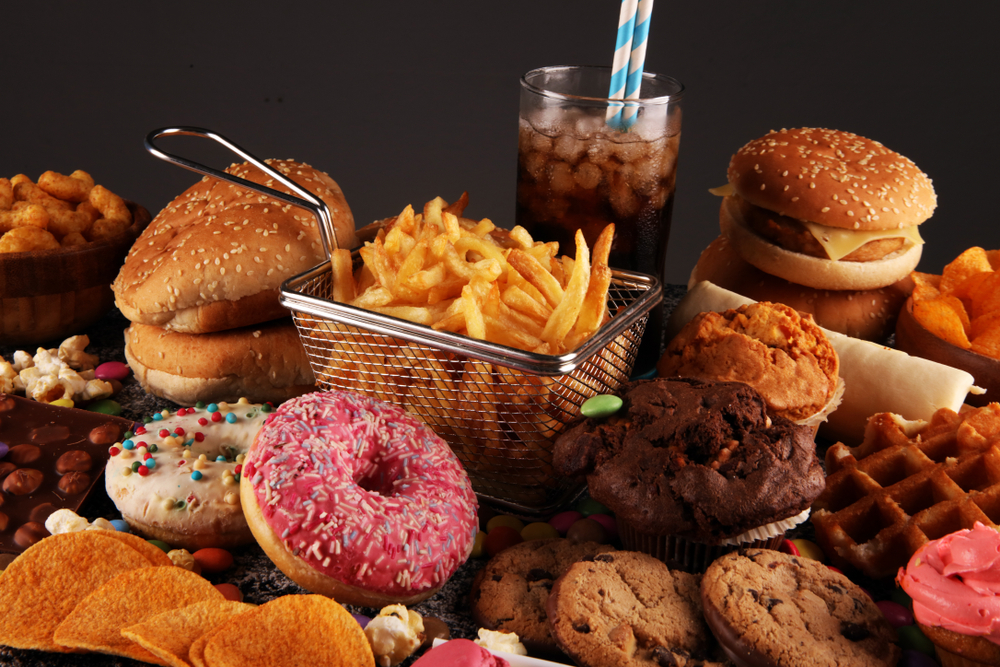
There are healthy foods that you can avoid if you have GERD. But, this doesn't mean you have to cut out all your favorite foods. Modifying your diet will often be enough to reduce the risk of developing GERD. Cut back on citrus fruits and substitute with non-citrus varieties. You can also eat more vegetables while avoiding high-fat varieties.
Fresh herbs are a great way to add flavor and color to your meals. Just make sure that they aren't too acidic. Onions are great for adding flavor to your food without irritating your stomach. Alternatively, you can try using green or shallots to get the same effect. It doesn't matter which type of onion it is, you should start small and then increase gradually.
Tomatoes, tomato sauce, and other tomato-based foods should be avoided if you have GERD. Tomatoes contain high levels of lycopene which is an effective cancer fighter. However, this acidity can irritate the already inflamed tissue in the esophagus. You should avoid them as often as possible. Besides tomatoes, other foods that contain lycopene are watermelons, and watermelon.

Pizza should be avoided at all costs. Combining spicy and fatty foods can make GERD worse. Fried and fatty foods should also be avoided. Avoid alcohol, chocolate, and coffee. Acid reflux can be caused by caffeine. Those with GERD should reduce their intake of caffeine drinks.
Avoid spicy foods on a regular basis. Onions are a healthy food staple but they can cause heartburn. Onion stimulates the release of acid and bile. The good news is that onions can be cooked to put out the fire. Adding onion to the list of foods to avoid if you suffer from GERD can help to manage the condition. These aren't the only foods you should avoid if you have GERD. However, it is important to be aware of them.
Although many of these foods should be avoided, some can worsen your symptoms. If you have GERD, it is best to avoid spicy foods. These foods can increase the acidity of the stomach by altering the lower-esophageal secretion. Avoid chocolates as they contain cocoa and caffeine. All of these substances can be acidic and should not be consumed with GERD.
It is important that you are aware of what foods can trigger GERD symptoms. Some foods can trigger severe pain while others will only exacerbate the symptoms. Some foods to avoid with GERD include citrus fruits, citrus juice, and alcohol. It is important to eat these foods in moderation if you want to maintain your health. These foods should be limited in your diet. Talk to your doctor if you are unsure which foods to avoid if you have GERD.

If you have GERD, you should avoid alcohol and spiced foods. GERD can be caused from foods and ingredients. Limiting the intake of these foods is a good idea. Remember that alcoholic and caffeine are both acidic. You can avoid certain foods if you suspect that your GERD symptoms could be related to a specific food.
Citrus fruits should also be avoided if you suffer from GERD. Consuming grapefruit and oranges are high in citric acid and can make your symptoms worse. It is important to limit citrus fruit intake. It is not necessary to cut out all citrus but it is important to keep your consumption to a minimum. Instead, eat the fruits and drink as much as possible. You can limit the amount of citrus fruit you consume if necessary.
Avoid dairy products if GERD is a concern. While dairy products can help some with GERD, it can worsen the condition. In addition to these, you should avoid caffeine, alcoholic drinks, and caffeine. Your diet can also contribute to GERD symptoms. It is best to speak to your doctor about specific food allergies. If you already have GERD medication, you will be able to make a healthier diet.
FAQ
How can I tell what is good for me?
You have to listen to what your body says. Your body will tell you how much exercise, nutrition, and sleep you need. It is important to listen to your body to ensure you are not doing too much. Take care of your body and make sure that you're staying healthy.
Do I need to count calories
It is possible to wonder "What diet is best for me?" or "is counting calories necessary?" The answer to this question depends on many factors, including your current health, your personal goals and preferences, as well as your overall lifestyle.
The Best Diet for me - Which One Is Right for You?
The best diet depends on me, my health, my goals, my preferences and my overall lifestyle. There are many options, both good and bad. Some diets work for some people, while others are not. So what do I do? How do I make a good decision?
This article aims at answering these questions. It begins by briefly describing the various diets available today. Then, the pros and cons of each type of diet are discussed. We'll then discuss how to choose which one is best for you.
To begin, let's take a quick look at the different types of diets.
Diet Types
There are three main types, low fat, high protein, or ketogenic diets. Let's briefly discuss them below.
Low Fat Diets
A low-fat diet is one that limits the intake of fats. This is done through reducing the intake of saturated fats (butter, cream cheese, etc.) You can replace them with unsaturated oils (olive oil and avocados) People who are looking to lose weight quickly and easily will benefit from a low-fat diet. This diet can cause constipation, heartburn, and stomach problems. Vitamin deficiencies can also occur if the person doesn't get enough vitamins through their diet.
High Protein Diets
High protein diets discourage carbohydrates and encourage the use of proteins. These diets typically have more protein than other diets. They are meant to help build muscle mass and burn more calories. Unfortunately, they can't provide adequate nutrition for those who eat regularly. They can also be very restrictive so they may not be suitable for everyone.
Ketogenic Diets
The keto diet is also known as the keto diet. They are high in fat, moderately high in protein and low in carbohydrates. These foods are popular among athletes and bodybuilders as they allow them to train harder, longer and without becoming tired. To avoid side effects such as fatigue, nausea, headaches, or other unpleasant side effects, you must strictly adhere to their instructions.
How often do I need to exercise?
Exercise is essential for maintaining a healthy lifestyle. You don't have to exercise for a certain amount of time. It is important to find something that you enjoy and stay with it.
If you are working out three times a weeks, aim to do 20-30 minute of moderate intensity. Moderate intensity means you'll still be breathing hard after you've finished. This type of workout burns around 300 calories.
You can walk for 10 minutes every day if that is what you prefer. Walking is low in impact and easy for your joints.
You can also run for 15 minutes, three times per week. Running is a great exercise to build muscle tone and burn excess calories.
Start slowly if you aren't used to doing exercise. Start with just 5 minutes of cardio a few times a week. Gradually increase your cardio time until you reach the goal.
Statistics
- In both adults and children, the intake of free sugars should be reduced to less than 10% of total energy intake. (who.int)
- According to the 2020 Dietary Guidelines for Americans, a balanced diet high in fruits and vegetables, lean protein, low-fat dairy and whole grains is needed for optimal energy. (mayoclinichealthsystem.org)
- This article received 11 testimonials and 86% of readers who voted found it helpful, earning it our reader-approved status. (wikihow.com)
- nutrients.[17]X Research sourceWhole grains to try include: 100% whole wheat pasta and bread, brown rice, whole grain oats, farro, millet, quinoa, and barley. (wikihow.com)
External Links
How To
What does the word "vitamin" mean?
Vitamins are organic compounds naturally found in food. Vitamins are necessary for us to absorb nutrients in the foods we consume. The body cannot make vitamins; therefore, they must be obtained from food.
There are two types if vitamins: water soluble, and fat soluble. Water-soluble vitamins dissolve in water easily. Some examples include vitamin C,B1 and B2 vitamins (thiamine), B2 and riboflavin, B3 and B6 vitamins (niacin), folic acids, biotin, pantothenic acids, and cholesterol. The liver and fat soluble vitamins are stored within the liver and in fatty tissue. Some examples include vitamin D and E, K, A and beta carotene.
Vitamins can be classified according to biological activity. There are eight major groups of vitamins:
-
A – Essential for normal growth, and the maintenance of good health.
-
C - vital for proper nerve function, and energy production.
-
D - essential for healthy bones, teeth, and gums.
-
E - needed for good vision and reproduction.
-
K – Required for healthy nerves & muscles.
-
P - vital for building strong bones andteeth.
-
Q – aids digestion of iron and iron absorption
-
R – Required for the formation of red blood vessels.
The recommended daily allowance (RDA), for vitamins, varies depending upon age, gender, or physical condition. The U.S. Food and Drug Administration sets RDA values.
For example, the RDA for vitamin A is 400 micrograms per dayfor adults 19 years or older. Pregnant women require 600 micrograms daily to support fetal development. Children ages 1-8 require 900 micrograms per day. Infants under one year of age require 700 micrograms per day, but this amount decreases to 500 micrograms per day between 9 months and 12 months of age.
Children aged between 1-18 years require 800 micrograms of sugar per day, while overweight children need 1000 micrograms. Children who are underweight receive 1200 micrograms every day to meet their nutritional requirements.
Children 4-8 years old who have anemia must consume 2200 micrograms of Vitamin C daily.
2000 micrograms are required daily for good health in adults over 50. Mothers who are pregnant, nursing, or have a high nutrient need will require 3000 micrograms a day.
Adults over 70 require 1500 micrograms each day, since they lose around 10% of their muscle mass every decade.
Women who are pregnant or lactating need more than the RDA. Pregnant and breastfeeding women require 4000 micrograms each day during pregnancy and 2500 Micrograms each day after delivery. Breastfeeding mothers need to consume 5000 micrograms every day when breastmilk has been produced.